Cold room & air conditioning
Refrigeration Industry: Heating Cables and Cords
How to choose heating cables in cold rooms?
Why heating cables are installed in cold rooms?

At first glance, it may seem surprising to place heating cables in cold rooms. And yet, these are necessary for the proper functioning of negative cold rooms. They prevent the risk of falling in cold rooms. Other cables make it possible to create a thermal barrier between the cold room and the ground, this avoids creating a crawl space. Other heating cables are necessary for the evacuation of condensates and finally around the seals of cold room doors to allow the opening of sliding or hinged doors.
So what is a cold room heating cable?
A heating cable also called heating cord, heating wire see heating cord or heating resistance is an electric cable which dissipates calories in order to prevent freezing or to maintain a desired temperature.
There are different types of heating cables suitable for each application. Each heating cable must respect technical and thermal characteristics such as its power, its length, the voltage of use, its coatings in order to be perfectly adapted to its application.
The ELTRACE offer offers a set of electric heating cables that covers all the needs of the refrigeration industry.
From heated benches for cold room door sills to heated mats for floors, via self-regulating heating cords for door seals, not forgetting flow heating resistors in the combined condensate drain pipe boxes specially adapted to the various situations, our engineers will be able to guide you in your prescriptions and installation
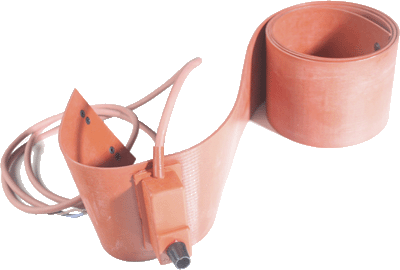
- Details
- Parent Category: Applications and uses
- Category: Refrigeration Industry: Heating Cables and Cords
-
Also available:

Heating belt for gas drums and cylinders

The silicone heating belts make it possible to accelerate the discharge of refrigerant from the bottles of refrigerants and to completely empty the bottle while limiting losses in complete safety.
Heating belt overview
Silicone heating belts are made either from resistant heating wires embedded in vulcanized silicone or with resistive circuits (printed circuit type) embedded in silicone. The advantage is to provide extraordinary flexibility of use. A thermostat is incorporated in the heating belt and thus makes it possible to avoid any risk of overheating and increased safety. Its quick spring fixing system allows installation on drums of non-standard dimensions. The dimensions of our heating belts cover the majority of drums but we have the possibility of manufacturing all dimensions and powers desired (in admissible technical configurations).
Caractéristiques générales
①Tolérance ±5 % sur les puissances et/ou dimensions
Main Features
- Details
- Parent Category: Applications and uses
- Category: Refrigeration Industry: Heating Cables and Cords
-
Also available:

Floor heating cable for cold room
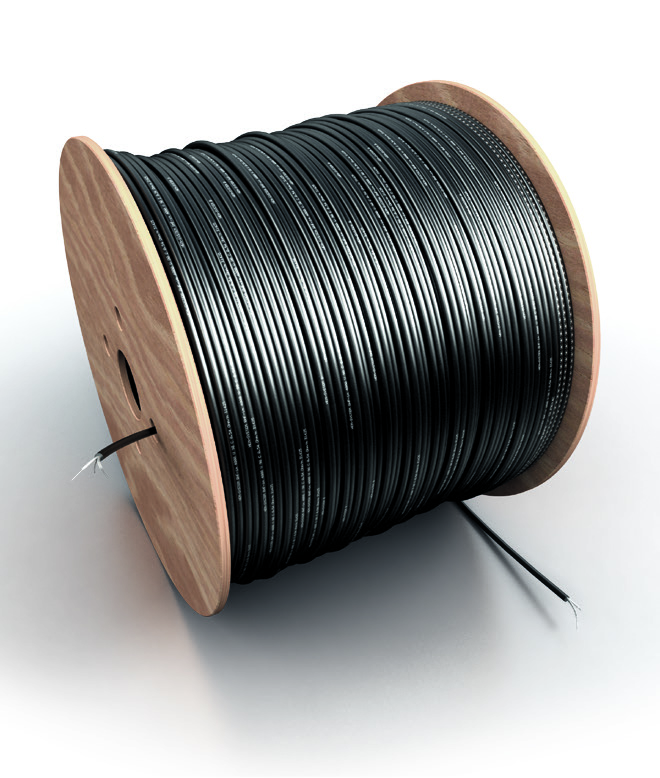
ELK-SOL type heating cables can be used to protect the floors of cold rooms against heaving caused by frost. This is a cold room floor frost protection electric heater. The cable must cover the contact surface with the substrate and provide a thermal barrier to prevent lifting and other cracks. The power to be installed is around 20 to 40 W/m². Given the inaccessibility of the equipment and the cost of the work, we planned to double the circuit; the second cable constituting a possible recue. Of course, the two cables should never work simultaneously. The cable must be regulated by an electronic thermostat type ELTE-1 or ELTH-B390. The temperature sensor will be placed in a glove finger, in order to make it interchangeable, it will be arranged on the same plane and in the axis of the heating conductors.
- Details
- Parent Category: Applications and uses
- Category: Refrigeration Industry: Heating Cables and Cords
-
Also available:

Electrical box for locked people in cold room and Open Door Alarm
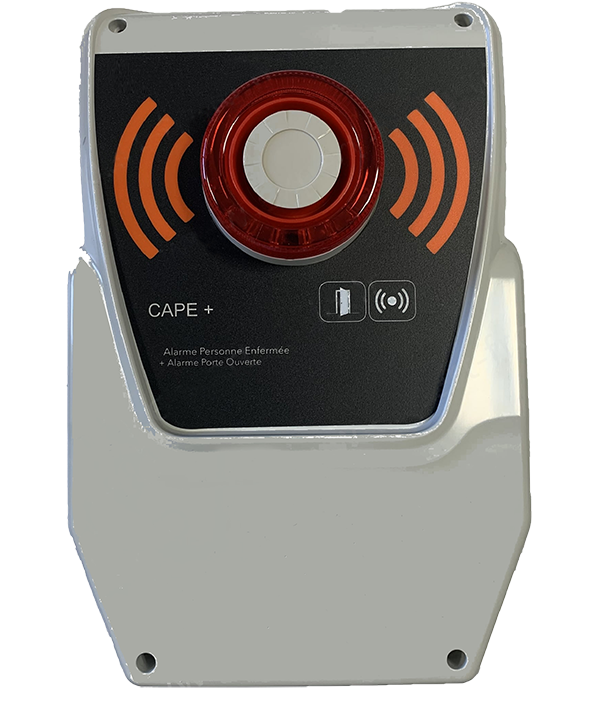
Product overview
The ELCAPE system is made up of two parts: the emergency button with continuously lit emergency button, to be installed inside the cold room and the audible and visual alarm box which is placed outside the cold room. bedroom.
In the event of a power outage, the unit is powered by the sealed lead battery. Its main function is to indicate the presence of a confined person in accordance with the NFE 35400 standard.
Technical specifications of the ELCAPE box
- Details
- Parent Category: Applications and uses
- Category: Refrigeration Industry: Heating Cables and Cords
-
Also available:

Heating resistor for condensate evacuation and refrigerated display cases
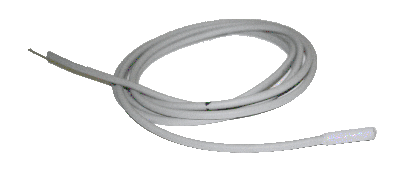 Freeze Protection of Cold Room Drain Pipes, Refrigerated Display Cases. The heating cables of the DRAINFREE family or more generally of the ELR-S range (see next page), are designed for applications in the field of refrigeration and air conditioning. The integrated cold junctions make them perfectly waterproof. They are checked and finished at the factory. Flexible and functional due to their technology and thanks to the specific characteristics of the materials that compose them. The silicone provides high dielectric strength and allows the heating cable to operate from -60°C to +200°C. They should be energized only during defrost cycles. In the case of plastic pipes installed in a cold room at low negative temperature, we advise you to use self-regulating heating tapes of the TRACECO™ T-20 or T-30 type.
Freeze Protection of Cold Room Drain Pipes, Refrigerated Display Cases. The heating cables of the DRAINFREE family or more generally of the ELR-S range (see next page), are designed for applications in the field of refrigeration and air conditioning. The integrated cold junctions make them perfectly waterproof. They are checked and finished at the factory. Flexible and functional due to their technology and thanks to the specific characteristics of the materials that compose them. The silicone provides high dielectric strength and allows the heating cable to operate from -60°C to +200°C. They should be energized only during defrost cycles. In the case of plastic pipes installed in a cold room at low negative temperature, we advise you to use self-regulating heating tapes of the TRACECO™ T-20 or T-30 type.
Technical caracteristics
Read more: DRAINFREE - Silicone Heating Cord for condensate pipe and refrigerated display cases
- Details
- Parent Category: Applications and uses
- Category: Refrigeration Industry: Heating Cables and Cords
-
Also available:

For defrosting the seals of sliding doors and hinged doors of cold rooms
![]()
TRACECO™-R self-regulating heating cords ensure the defrosting of door seals in negative cold rooms. They slip into the hinged or sliding doors of cold rooms to prevent ice from preventing the doors from opening. The TRACECO™-R replaces all your references and resistors. Whatever the dimensions of the doors, a single cable is enough for you. TRACECO™-R cords are placed on hinged or sliding doors. As “self-regulating” and due to its “parallel” technology, the TRACECO™-R heating cable connects directly to the desired length in the junction box. Thus avoiding the preparation of a cold outlet and therefore saving substantial time and cost. With an oblong section, it allows quick assembly without loss in the corners. TRACECO™-R is available in two powers 30 W/m and 40 W/m at 10 °C (9 W/ft and 12 W/ft at 50 °F). .
Technical characteristics
Read more: TRACECO-R - Self-regulating heating cable for defrosting cold room door seals
- Details
- Parent Category: Applications and uses
- Category: Refrigeration Industry: Heating Cables and Cords
-
Also available:

Heating mat with two heating cables: main and rescue
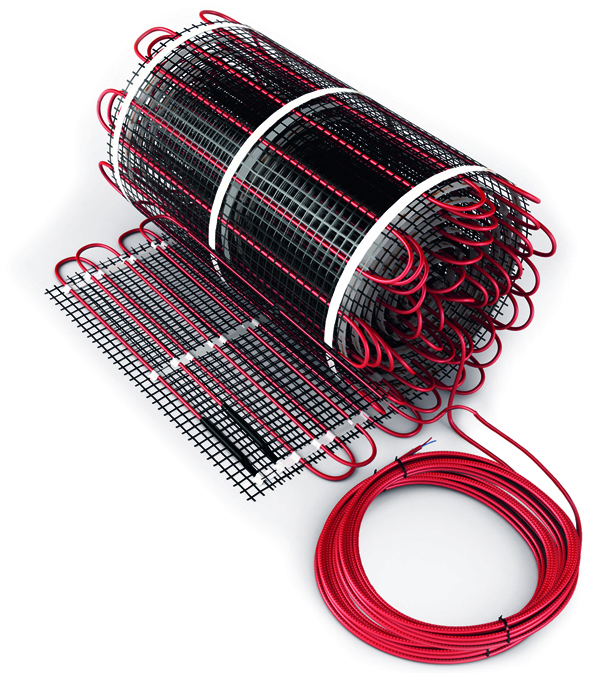 ELSAS electric heating mats sink into the concrete. They prevent the formation of ice on the surface of freezer doors or storage rooms. ELSAS heating mats are equipped with a double circuit: a main circuit and an emergency circuit, placed on a trellis suitable for concrete.
ELSAS electric heating mats sink into the concrete. They prevent the formation of ice on the surface of freezer doors or storage rooms. ELSAS heating mats are equipped with a double circuit: a main circuit and an emergency circuit, placed on a trellis suitable for concrete.
They apply when installing a negative cold room, freezing room, refrigerating room or industrial cold room.
The heating mat must be regulated by an electronic thermostat of the ELTE-1 or ELTH-B390 type. The temperature sensor will be placed in a glove finger, in order to make it interchangeable. The probe will be placed on the same plane and in the axis of the heating conductors.
Technical description
- Details
- Parent Category: Applications and uses
- Category: Refrigeration Industry: Heating Cables and Cords
-
Also available:

Heating mat double heating cables: main and rescue
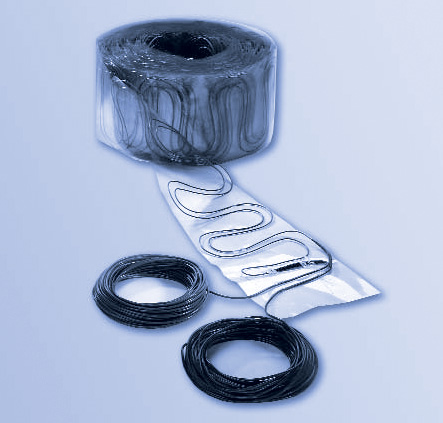
Heating mats for negative cold room floors are heating solutions specifically designed to maintain suitable temperatures in environments with extremely low temperatures, such as cold storage rooms and refrigerated warehouses. These heating mats play a crucial role in preventing freezing and ensuring that stored goods remain in optimal conditions.
Here are some important points to consider regarding heating mats for negative cold room floors:
-
Freezing Prevention: Extremely low temperatures in negative cold rooms can lead to the formation of ice on surfaces, which can pose safety hazards, damage goods, or hinder operations. Heating mats for floors prevent ice and frost formation, ensuring a safe and functional environment.
-
Temperature Maintenance: Heating mats provide uniform floor heating, helping to maintain stable temperatures within the cold room. This is crucial for preserving foods and other products sensitive to temperature fluctuations.
-
Energy Efficiency: Heating mat systems are designed to be energy-efficient. They use sensors and thermostats to maintain the desired temperature, reducing energy consumption compared to traditional heating systems.
-
Installation and Integration: Heating mats for floors are typically installed during the construction or renovation of the cold room. They can be integrated under various types of flooring materials, making them discreet and unobtrusive to operations.
-
Maintenance: Heating mats are designed to be durable and generally require minimal maintenance. However, periodic checks of the systems and control elements are recommended to ensure optimal performance.
-
Safety: Heating mat systems are designed with strict safety standards to prevent electrical and overheating risks. They are tested and certified to ensure operational safety.
In summary, heating mats for negative cold room floors are essential solutions for maintaining proper storage conditions in environments with extremely low temperatures. They help prevent freezing, preserve the quality of stored products, and ensure the safety of operations in industries such as food, pharmaceuticals, and other sectors requiring strict temperature control.
The ELSOL family is a range of heating mats fitted with two electric heating cables for the floors of negative cold rooms. They are used to protect the floors of cold rooms against heaving caused by frost. The heating mat is placed on the ground according to the diagram below to cover the contact surface with the substrate and makes it possible to compensate for heat loss from the ground. The power to be installed is around 20 to 40 W/m². Given the inaccessibility of the equipment and the cost of the work, we doubled the circuit; the second cable constituting a possible backup. The two cables should never run simultaneously. The heating mat must be regulated by an electronic thermostat of the ELTRACE ELTE-1 or ELTH-B390 type. The temperature sensor will be placed in a glove finger, in order to make it interchangeable, it will be arranged on the same plane and in the axis of the heating conductors.
Technical characteristics of heating mats for the floor of negative cold rooms.
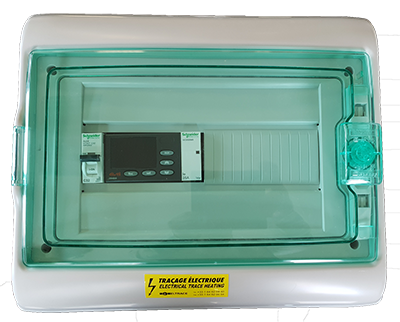
- Details
- Parent Category: Applications and uses
- Category: Refrigeration Industry: Heating Cables and Cords
-
Also available:

Electrical box with built-in thermostat, contactor and circuit breaker
 The range of CTx Technical Boxes by ELTRACE type CT1 in 230 V or CT3 in 400 V are fully equipped to be totally and easily operational. CTx electrical panels are essential elements for the proper functioning of our heating systems.
The range of CTx Technical Boxes by ELTRACE type CT1 in 230 V or CT3 in 400 V are fully equipped to be totally and easily operational. CTx electrical panels are essential elements for the proper functioning of our heating systems.
Characteristics of the box with thermostat
Self-extinguishing: resistance to incandescent wire 750°C in accordance with ERP regulations Watertight boxes - IP 65 - IK 09 - Class II - UV resistance. Impact reinforced polystyrene material
Standards
EN NF C15-100, EN 60730-2,-9, IEC 62 208, EN 60695-2-11, ISO 4892-2, IEC 62 208 & EC 61 439-3 La gamme des Coffrets Techniques CT par ELTRACE type CT1 en 230 V ou CT3 en 400 V sont entièrement équipés pour être totalement et facilement opérationnels.. il sont des éléments indispensables au bon fonctionnement des nos systèmes de chauffage.


